Small home offices present unique challenges: balancing functionality, comfort, and style within limited square footage. In this article, we explore 20 innovative ideas to transform even the tiniest nook into a productive workspace. You’ll discover solutions ranging from built-in “cloffices” and fold-away desks to multi-purpose furniture, vertical storage, and strategic lighting. Each section offers practical guidance grounded in expert recommendations and real-world examples, ensuring you can optimize every inch of your home without sacrificing aesthetics or ergonomics.
1. Maximize Alcoves with a Closet Office
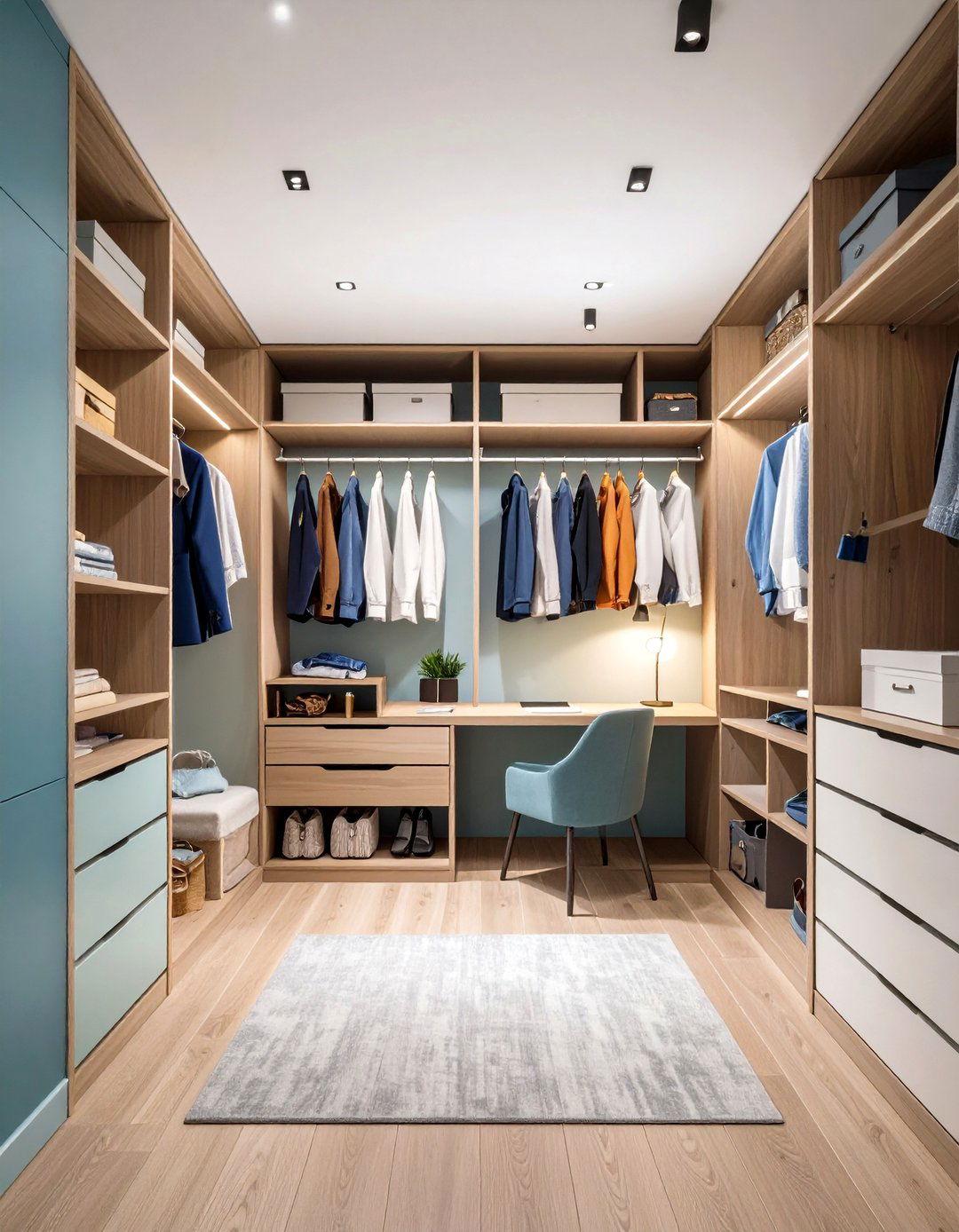
Transforming an underutilized closet into a “cloffice” provides a dedicated workspace without encroaching on living areas. By installing a floating desk surface and adjustable shelving, you create both a work zone and ample storage for supplies and files. Personalize the space with paint or wallpaper and integrate task lighting above the desk to ensure clarity and reduce eye strain. When closed, the doors conceal any clutter, instantly restoring the room’s original function and maintaining a clean aesthetic.
2. Install a Floating Wall-Mounted Desk

Wall-mounted desks are ideal for small spaces because they free up floor area and offer a minimalist look. Fold-down or fixed floating desks can be tucked away when not in use, creating a seamless living environment. Pair the desk with a slim stool or foldable chair to maintain openness and easily stow seating. Add a pegboard or magnetic board above the desk to keep essential tools within reach without sacrificing surface space.
3. Embrace Fold-Away Murphy Desks
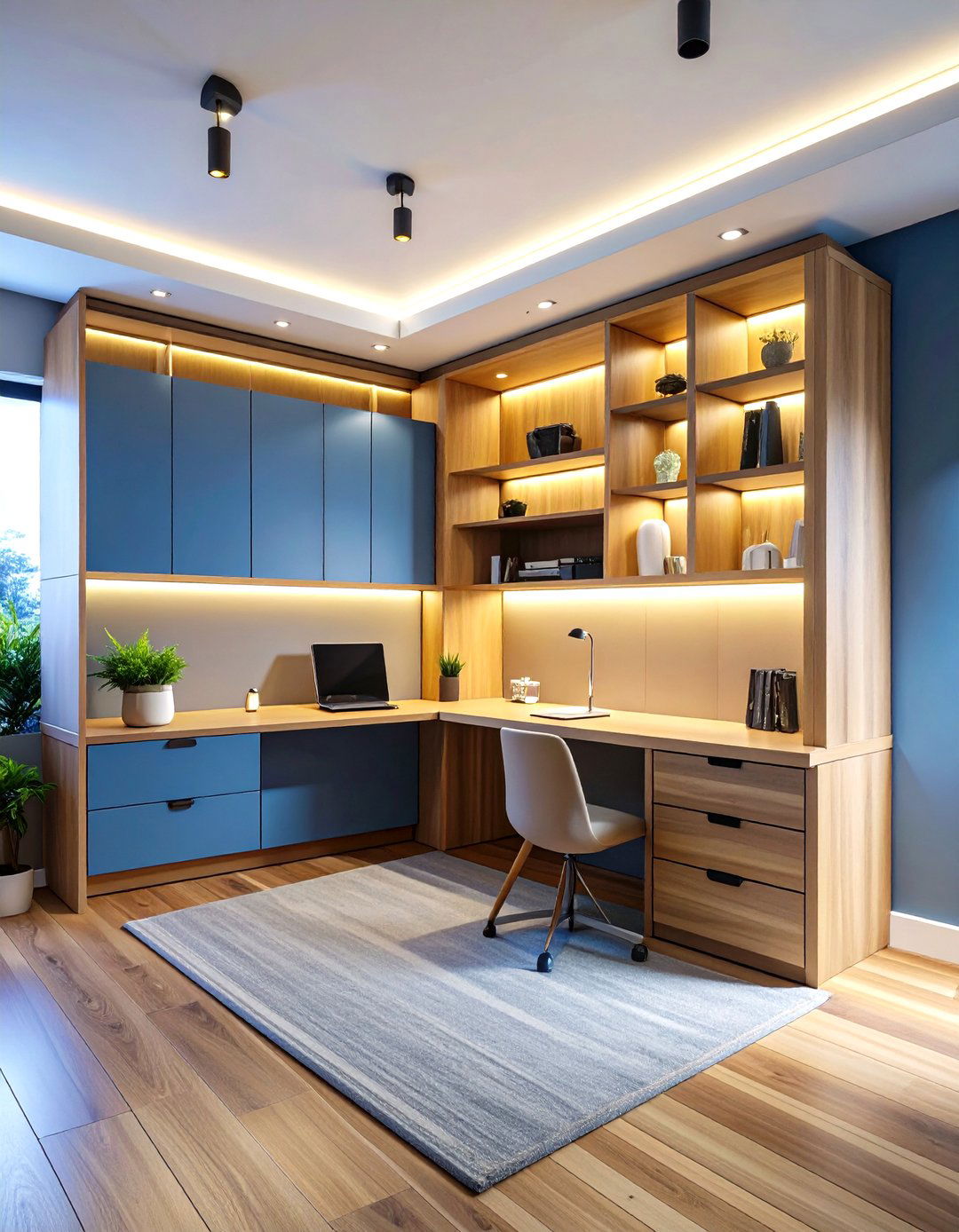
Murphy-style desks pivot down from a wall cabinet, combining hidden storage with a full-size work surface. They’re perfect for rooms that double as guest areas—when folded up, the desk becomes an unobtrusive cabinet. Integrate interior LED strips to automatically illuminate the workspace when opened. This design maximizes vertical space and keeps your home office clutter-free by enclosing supplies behind cabinet doors.
4. Leverage a Credenza as a Secondary Surface
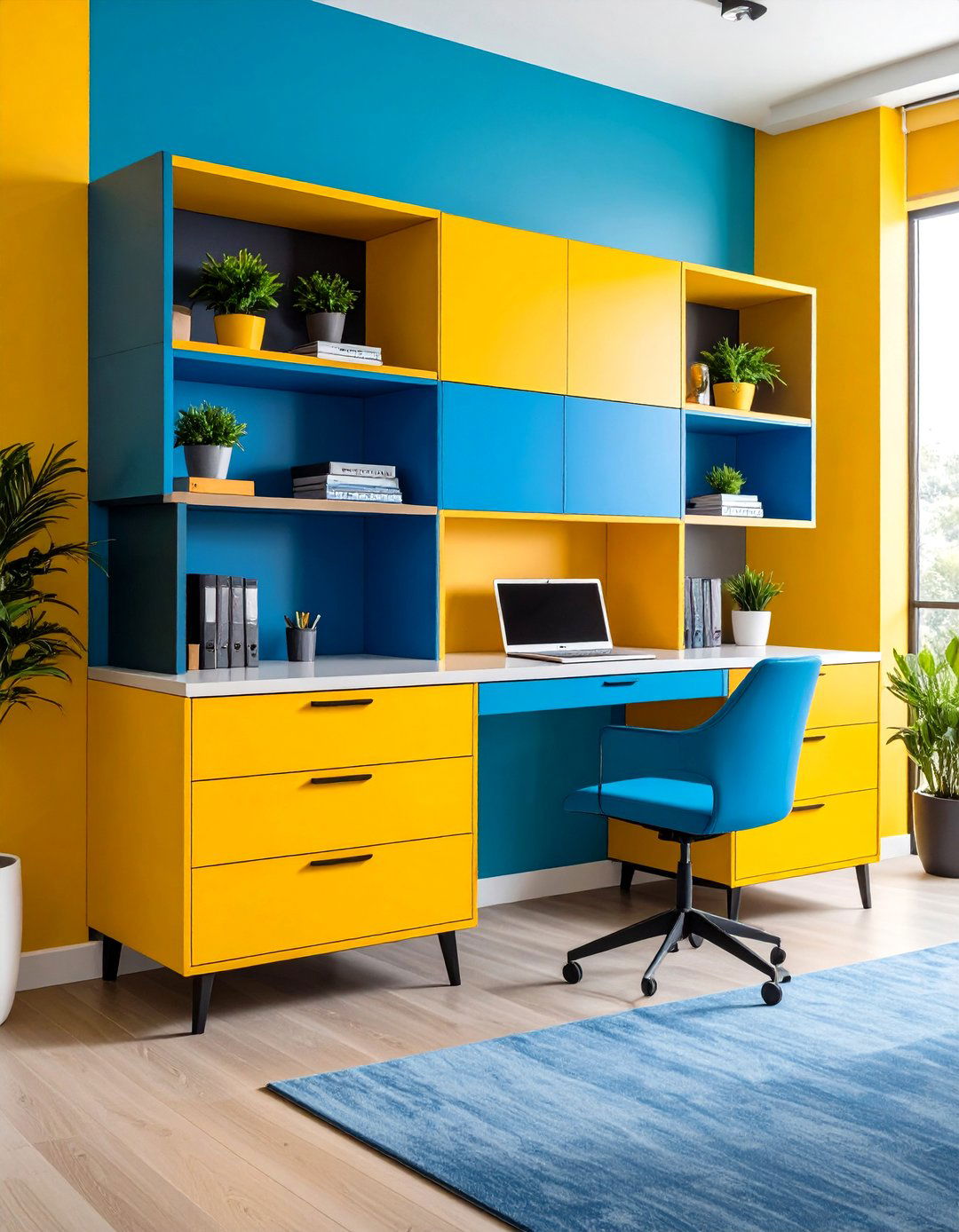
A credenza desk offers both workspace and storage without dominating the room. Positioned behind or beside a primary desk, it provides extra surface area for paperwork, printers, and reference materials. Its open shelving and drawer configuration make organization intuitive, while the low profile preserves sightlines and openness. Choose a piece that complements your décor to seamlessly blend form and function.
5. Carve Out Corners with L-Shaped Desks
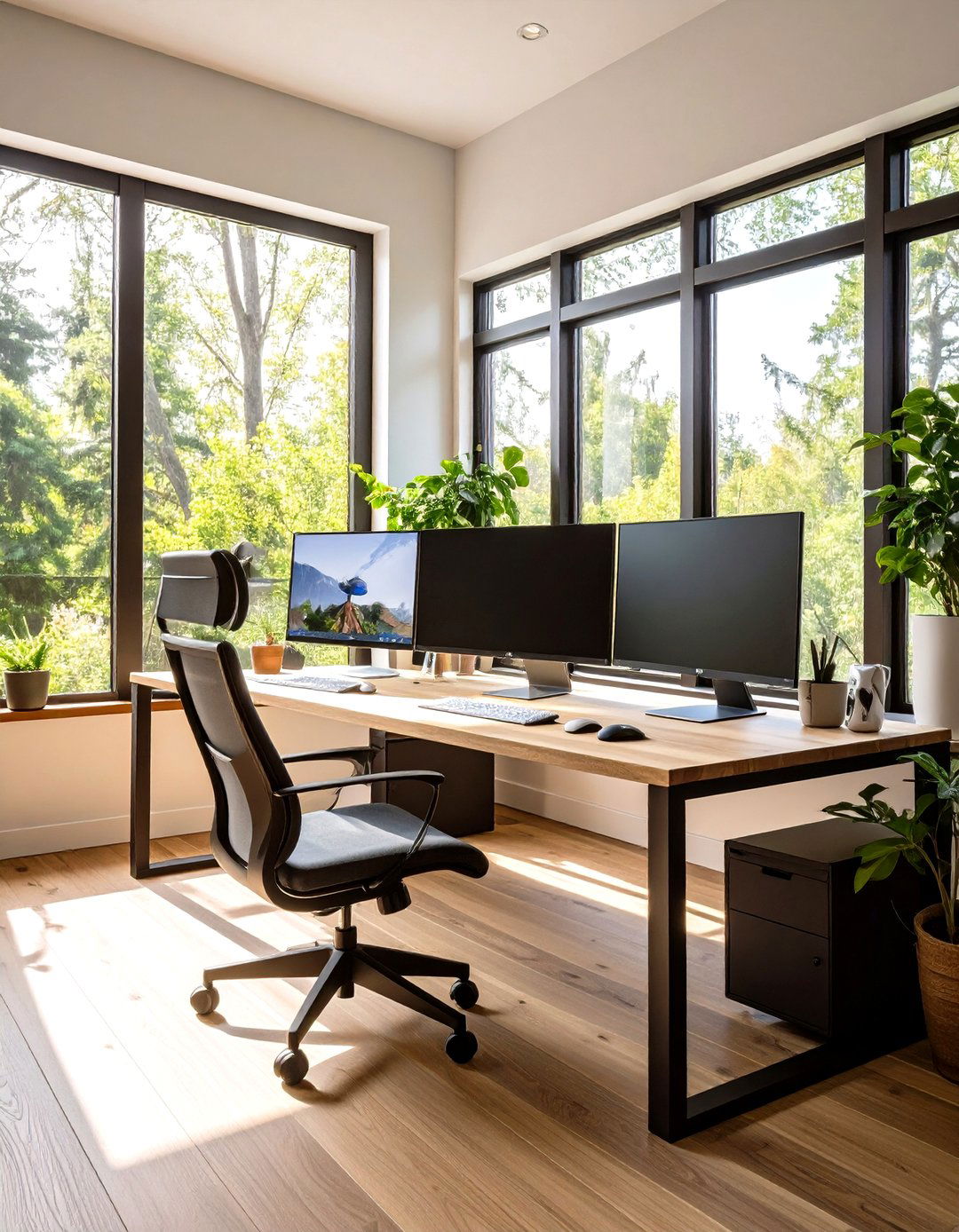
L-shaped desks fit snugly into corners, effectively utilizing two walls and creating distinct zones for computing and paperwork. This layout supports dual monitors or a monitor-plus-laptop setup, improving workflow and separating tasks. Position the desk near a window to capitalize on natural light, boosting mood and productivity throughout the day.
6. Utilize Landing Spaces under Staircases
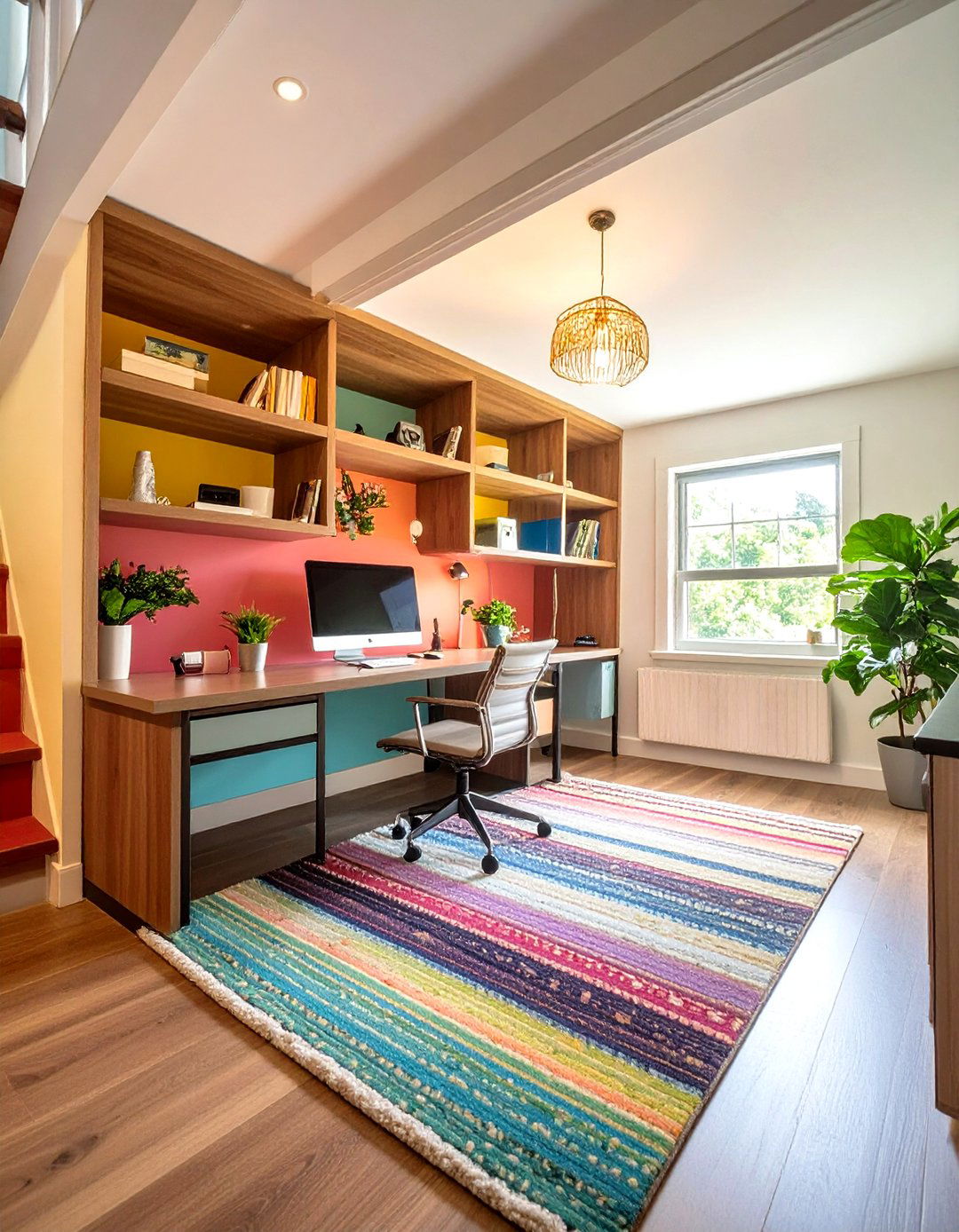
Often overlooked, landings and under-stair areas can accommodate narrow workstations. Designers recommend custom built-in desks and shelving tailored to irregular dimensions, transforming awkward alcoves into efficient offices. Incorporate cable management channels and recessed lighting to maintain tidiness and prevent shadows. Use color blocking or an accent rug to demarcate the workspace from adjacent hallways.
7. Choose Multi-Functional Furniture
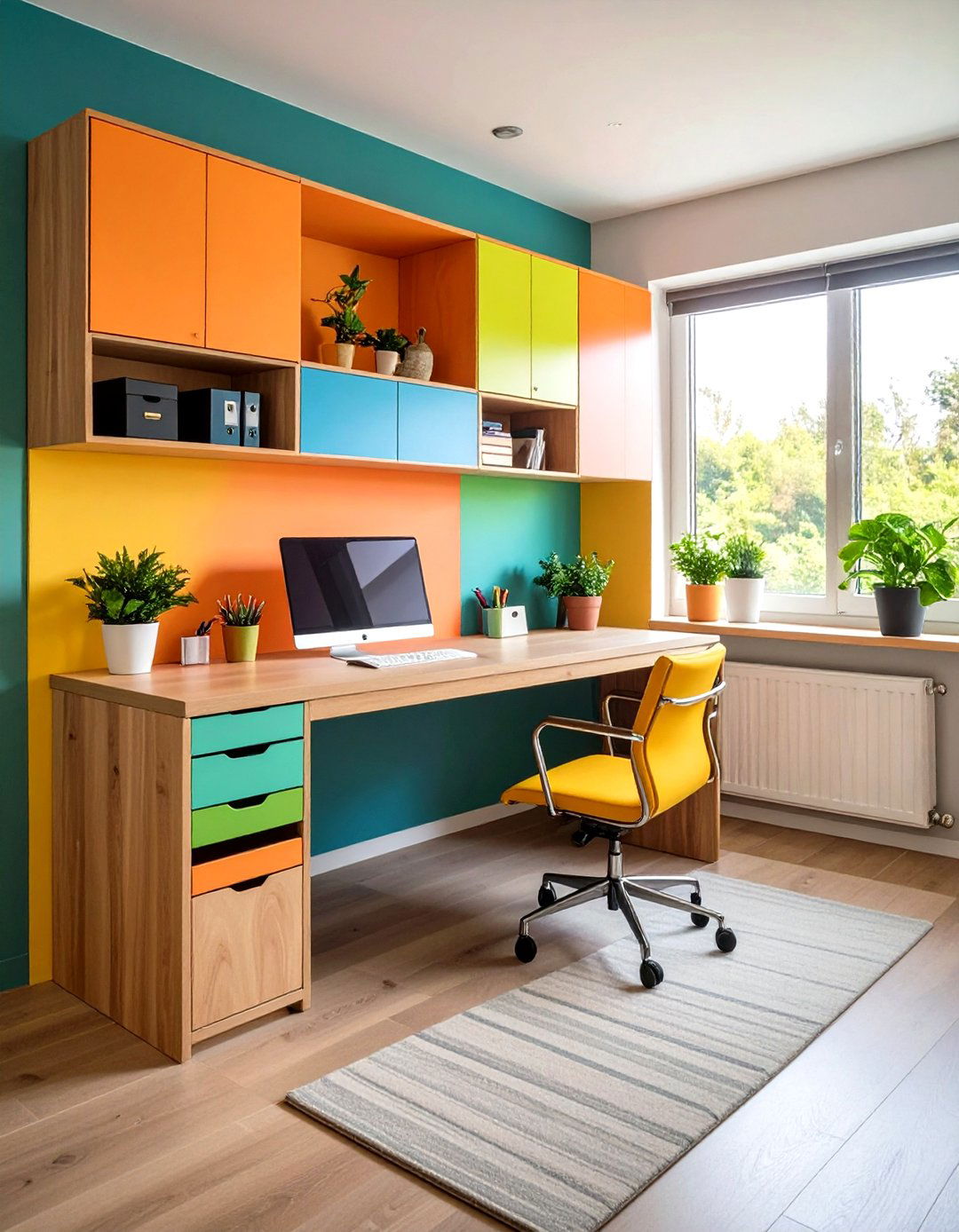
Opt for pieces that serve dual purposes, such as desks with integrated filing cabinets or benches with storage compartments. Multi-functional furniture maximizes utility per square foot and reduces the need for additional pieces. A desk-bench combo can double as seating for guests, while ottomans with hinged tops hide office supplies. Look for furniture with clean lines to keep the space feeling open.
8. Go Vertical with Tall Shelving
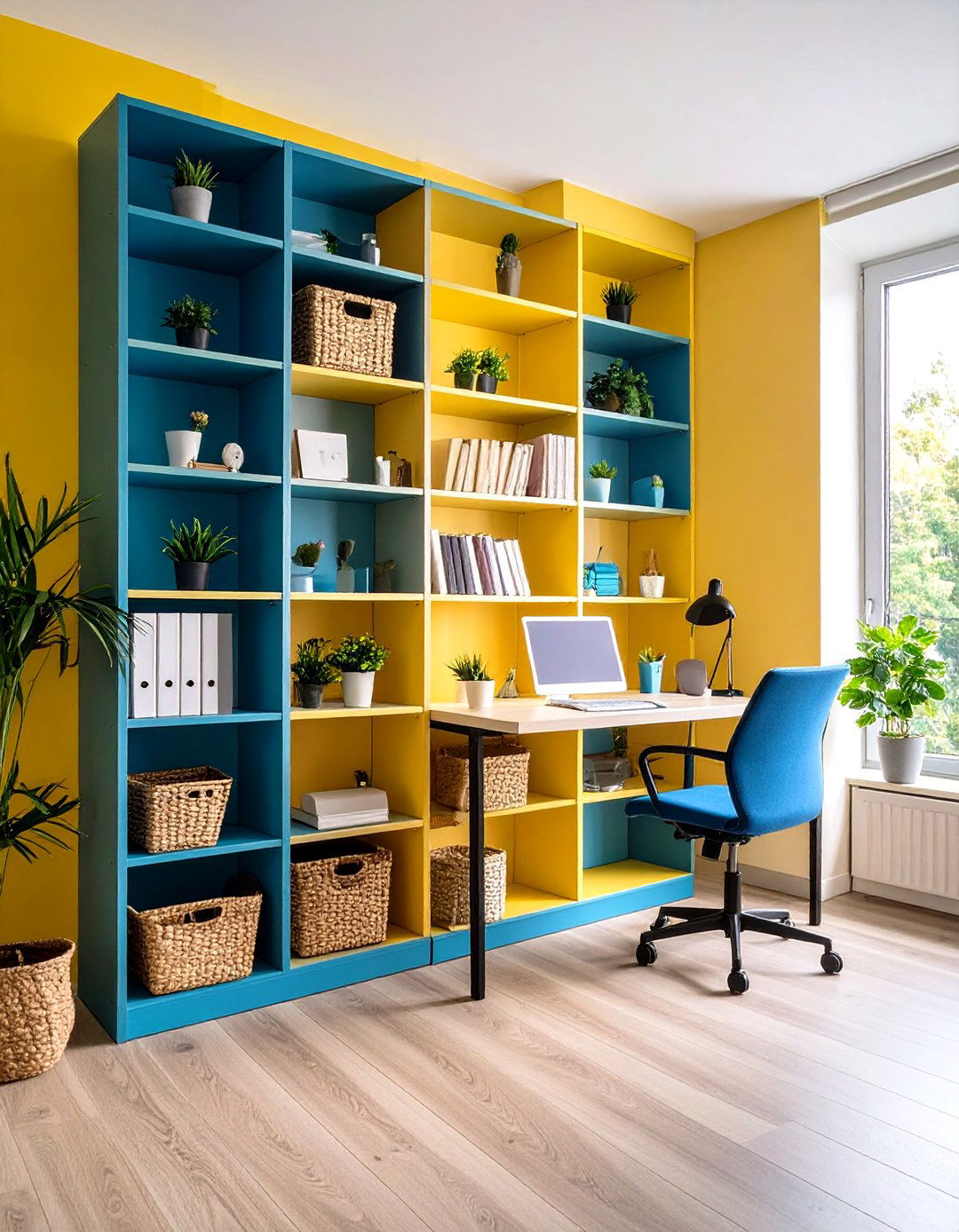
Vertical bookcases and wall-mounted shelving units make use of height rather than floor space. Adjustable shelves accommodate binders, books, and décor, while open designs prevent visual bulkiness. Incorporate baskets and bins on lower shelves to conceal smaller items and maintain a streamlined look. Floating shelf clusters can also serve as platforms for plants and personal mementos.
9. Add a Pegboard or Slatwall Organizer
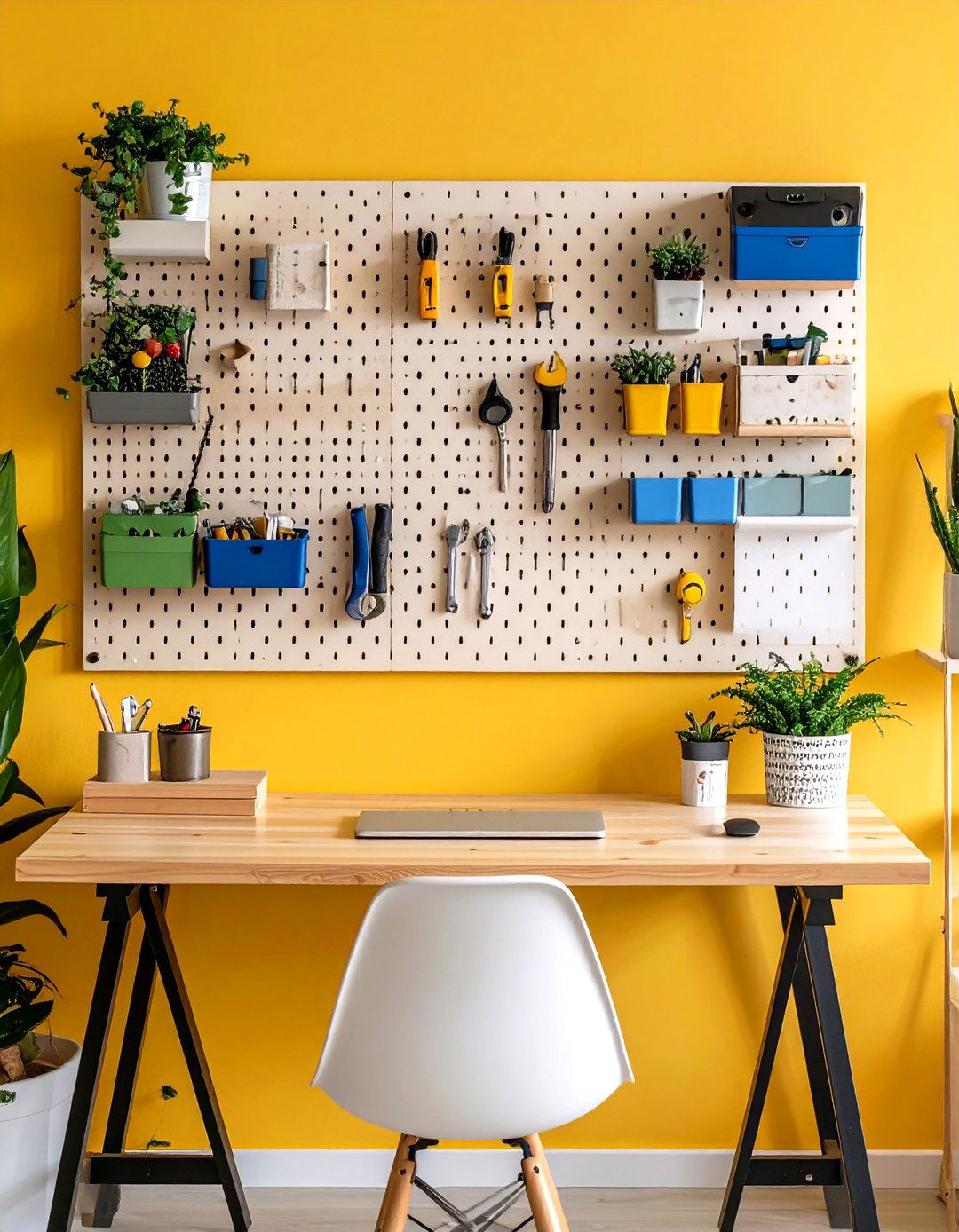
Pegboards and slatwall systems turn blank walls into versatile command centers. By hanging tools, stationery, and small storage buckets, you free desk space and keep essentials visible yet organized. Powder-coated metal pegboards add an industrial flair, while wooden slatwalls bring warmth. Mix hooks, shelves, and magazine racks to customize the layout for your workflow.
10. Optimize Natural Light and Views
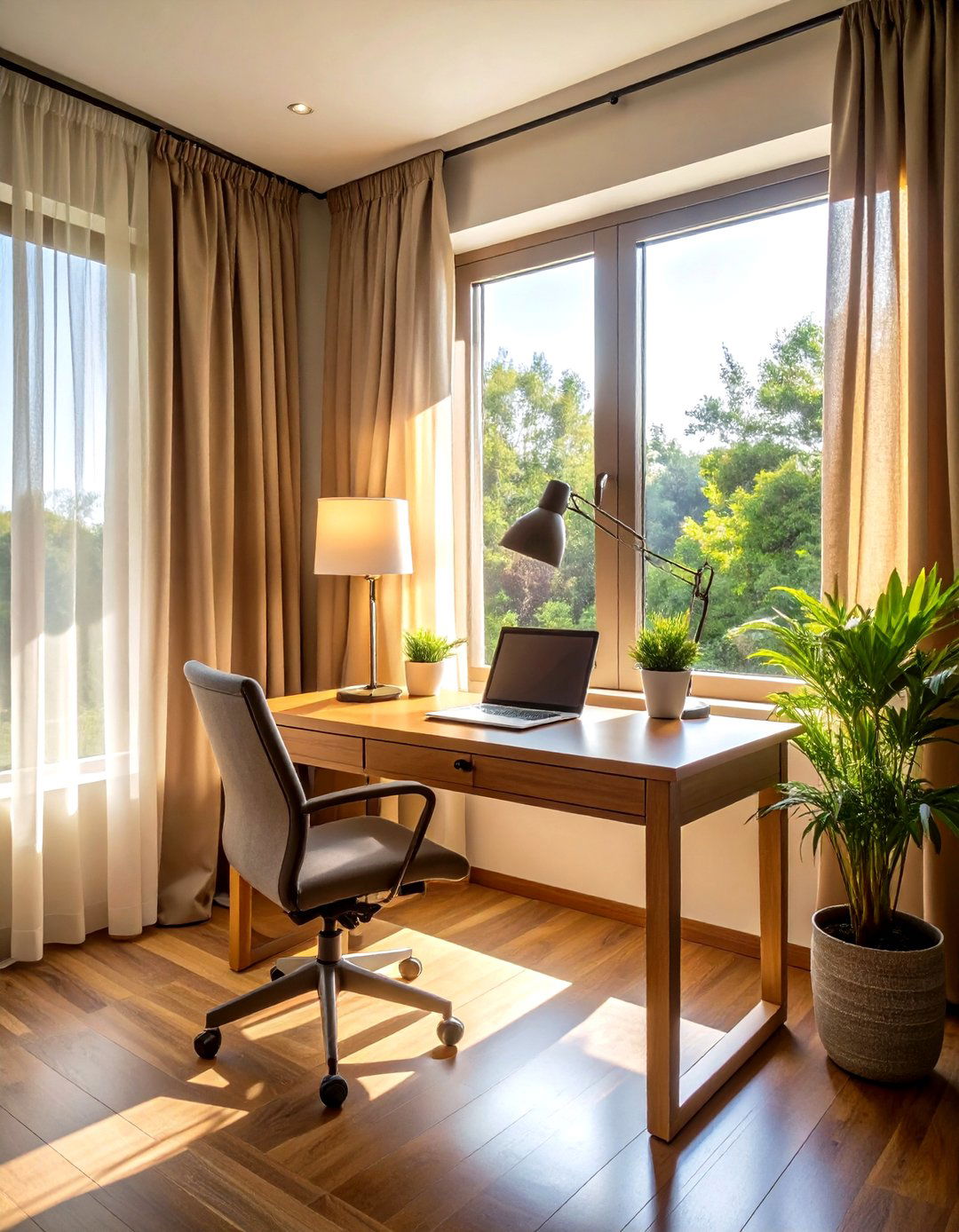
Position your desk near windows to harness daylight, which reduces reliance on overhead lighting and improves well-being. If privacy is a concern, add sheer curtains or adjustable blinds to control glare without blocking the view. For north-facing rooms, supplement with full-spectrum task lamps to mimic daylight and prevent eye fatigue.
11. Select a Narrow Console Desk
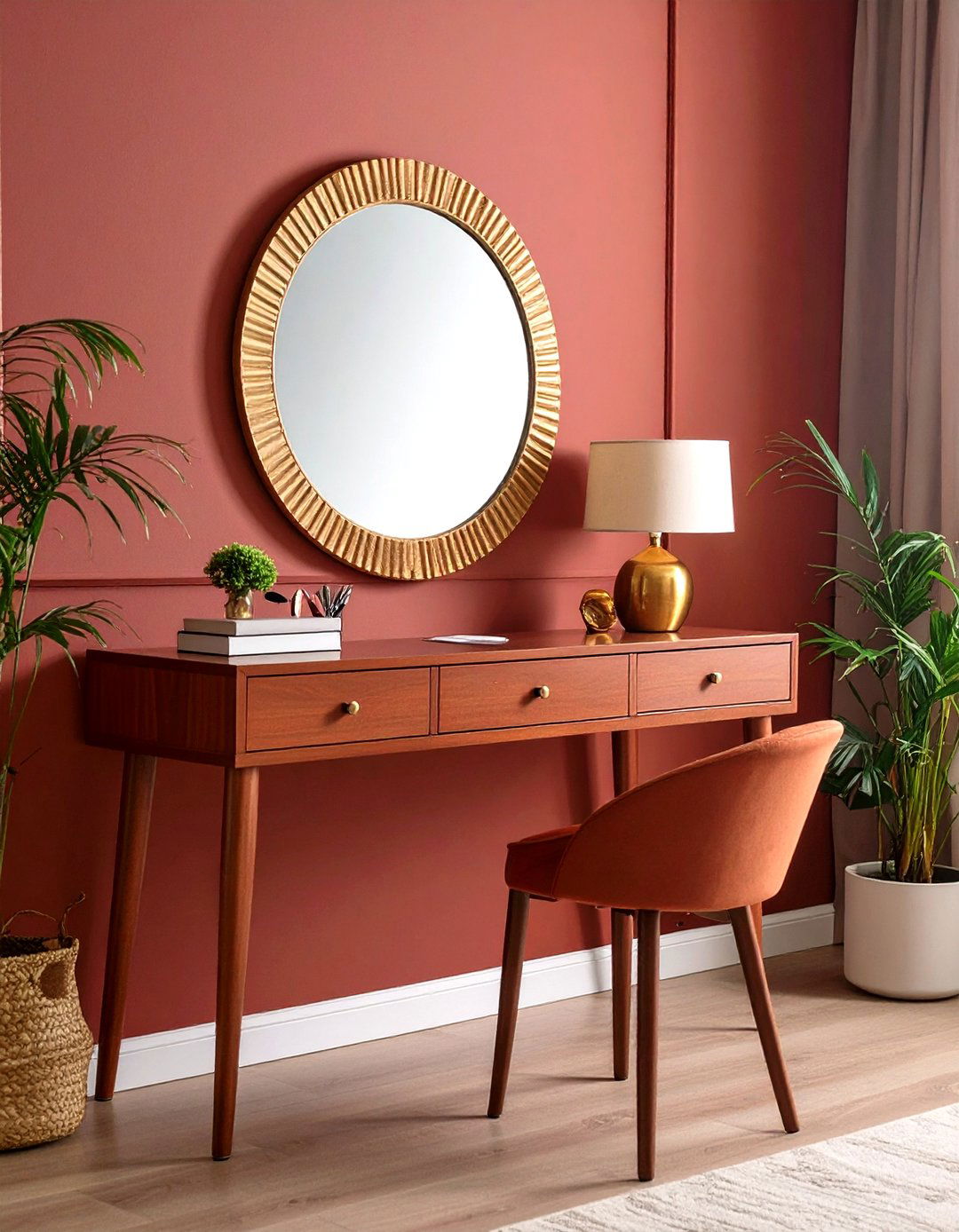
Console desks, often less than 24 inches deep, slip neatly against walls or behind sofas. Their slim profile makes them perfect for hallway––or entryway––offices. Despite the reduced depth, you can still fit a laptop and lamp, and add one or two drawers for supplies. Elevate the look with a decorative mirror above to visually expand the space.
12. Blend Work and Living Areas Tastefully
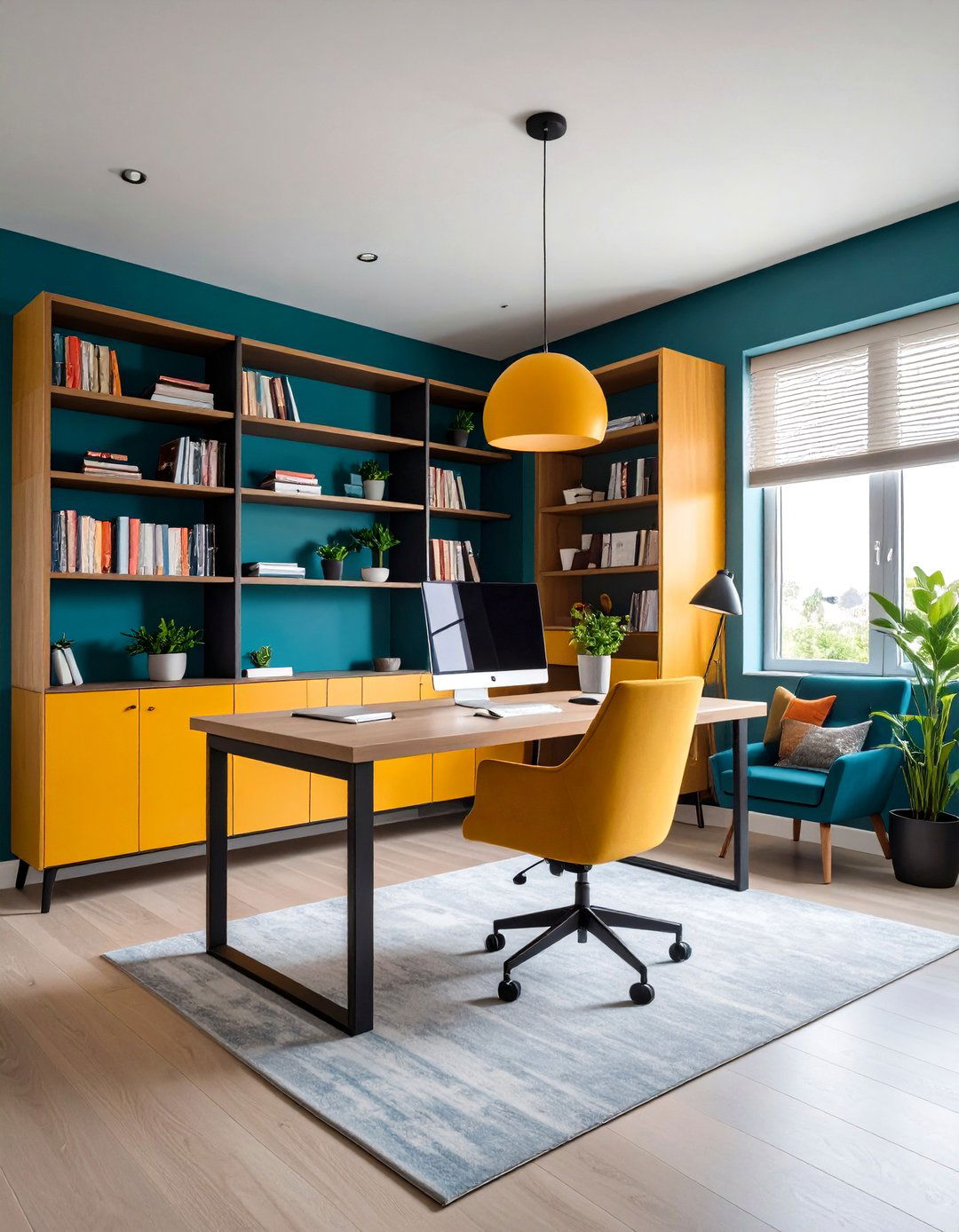
When true separation isn’t possible, use furniture placement and décor to define your office zone. A low bookshelf can act as a divider between a desk and living room seating. Choose cohesive color palettes and complementary materials so the office feels integrated rather than intrusive. Area rugs can anchor the work zone and delineate boundaries.
13. Create an Accent Wall or Wallpapered Nook

Applying wallpaper or a bold paint color behind your desk instantly transforms a bland corner into a focal point. Patterned wallpaper adds personality and can visually stretch walls in narrow rooms. If commitment is an issue, use peel-and-stick panels for an easy update. Floating shelves mounted on the accent wall further enhance depth.
14. Incorporate Greenery and Biophilic Elements

Plants purify air, reduce stress, and bring a sense of serenity to compact offices. Succulents and small potted plants thrive on floating shelves or windowsills without cluttering the desk. For darker spaces, consider low-light plants like pothos or snake plants and supplement with grow lights. Use hanging planters to keep surfaces clear.
15. Employ a Rolling Cart as Mobile Storage

A three-tier rolling cart can shuttle supplies, printers, or coffee essentials between rooms. Lock the wheels to secure it under your desk, then unlock and wheel it away to reclaim workspace when not in use. Clear acrylic or wire-mesh carts maintain visibility of contents and keep the look airy.
16. Hide Cables and Tech Clutter
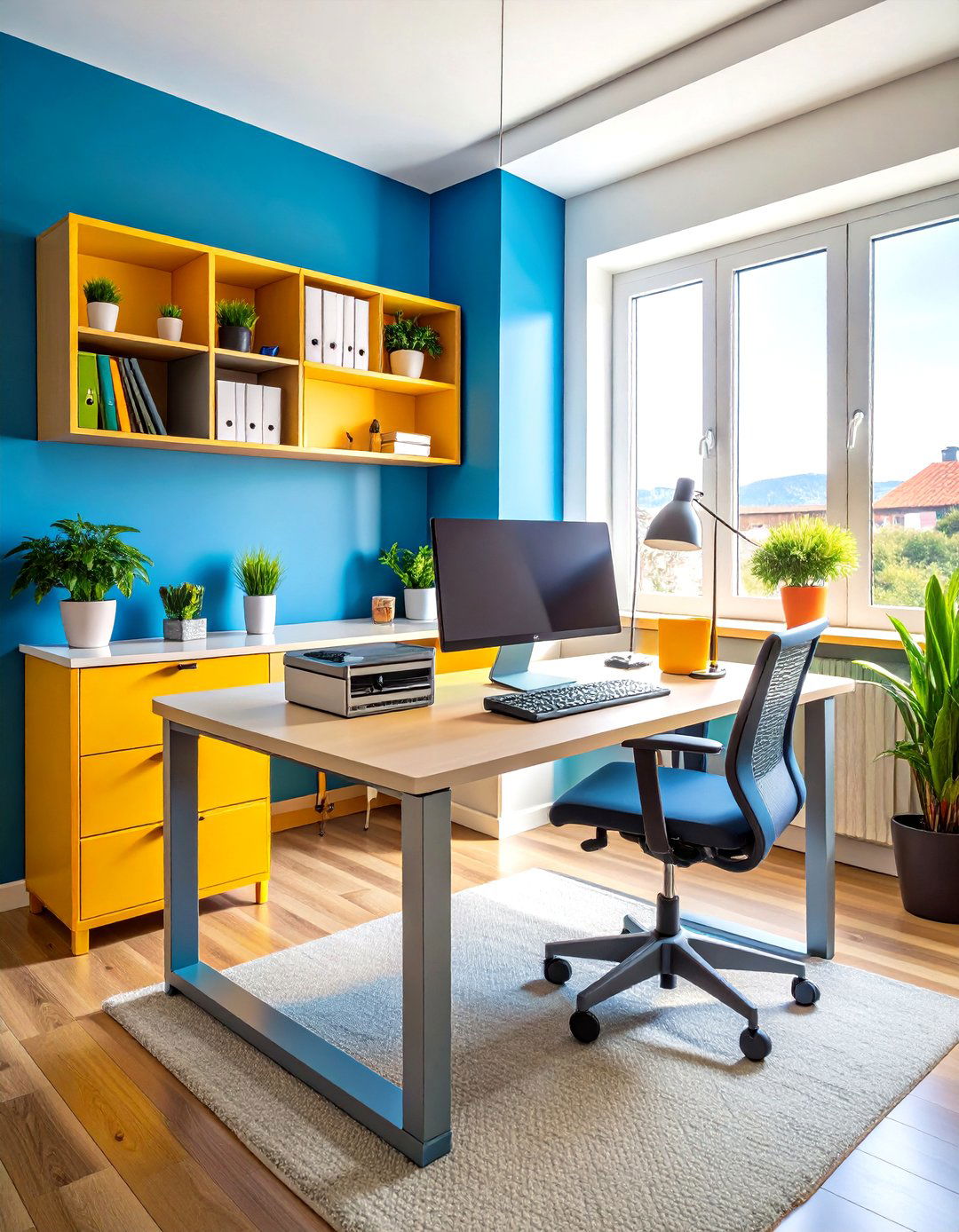
Implement cable management solutions—such as adhesive clips, under-desk trays, and zip ties—to keep cords organized and out of sight. Consider multi-port charging stations mounted to the underside of your desk to eliminate desktop power strips. Clean cable runs along walls or behind furniture maintain safety and aesthetics.
17. Elevate with Adjustable Standing Desks

Standing-height surfaces encourage movement and improve posture. Compact electric or crank-adjustable desks let you switch between sitting and standing in seconds. If a full sit-stand desk exceeds your budget, use a desktop converter on an existing table to gain flexibility.
18. Zone with Rugs and Lighting Layers
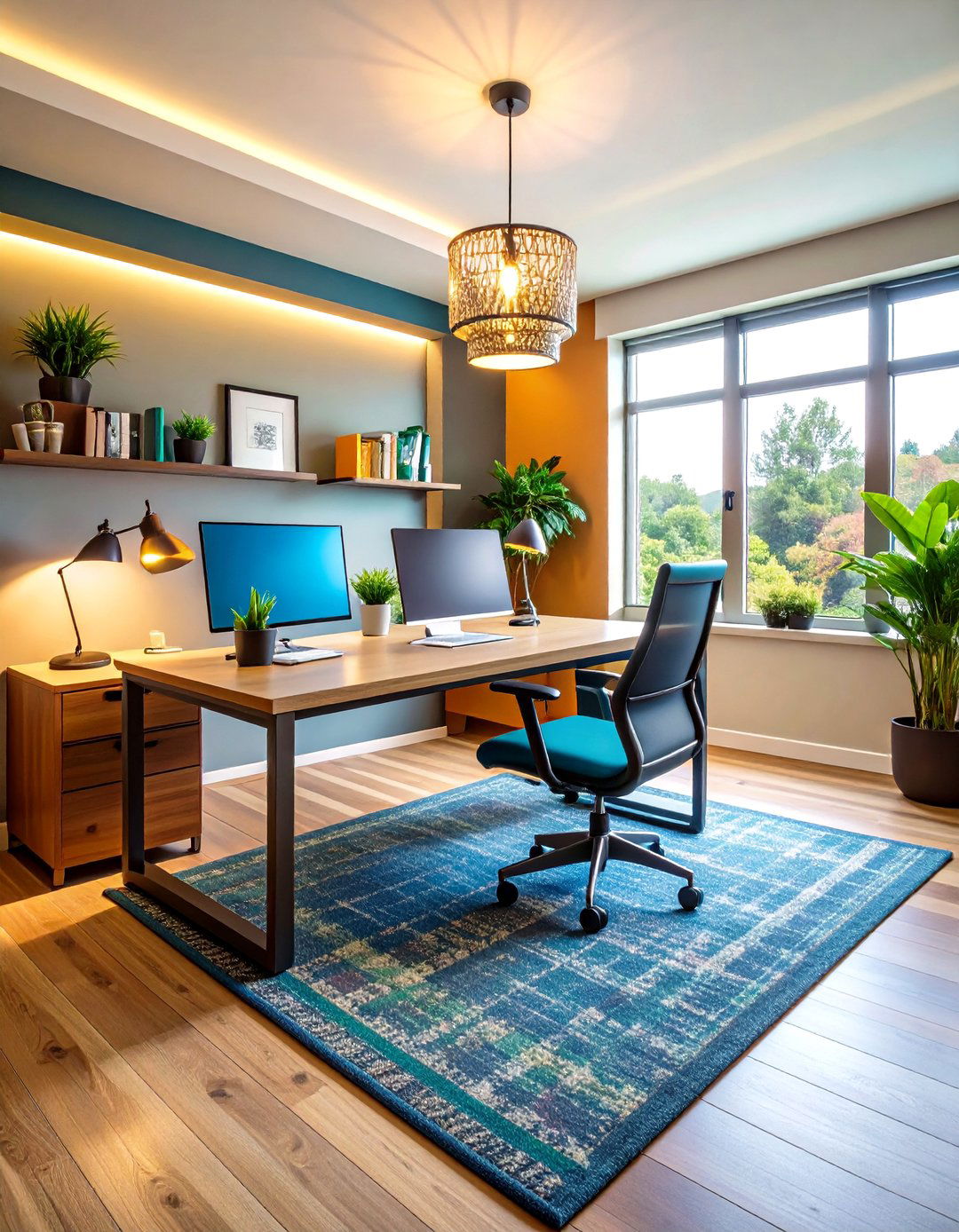
Defining your office area with a small rug visually separates it from the rest of the room. Layer ambient ceiling lights with task lamps and LED strip lighting under shelves to create depth and adjust brightness for different tasks. Dimmable fixtures offer further control over mood and focus.
19. Opt for Minimalist Décor
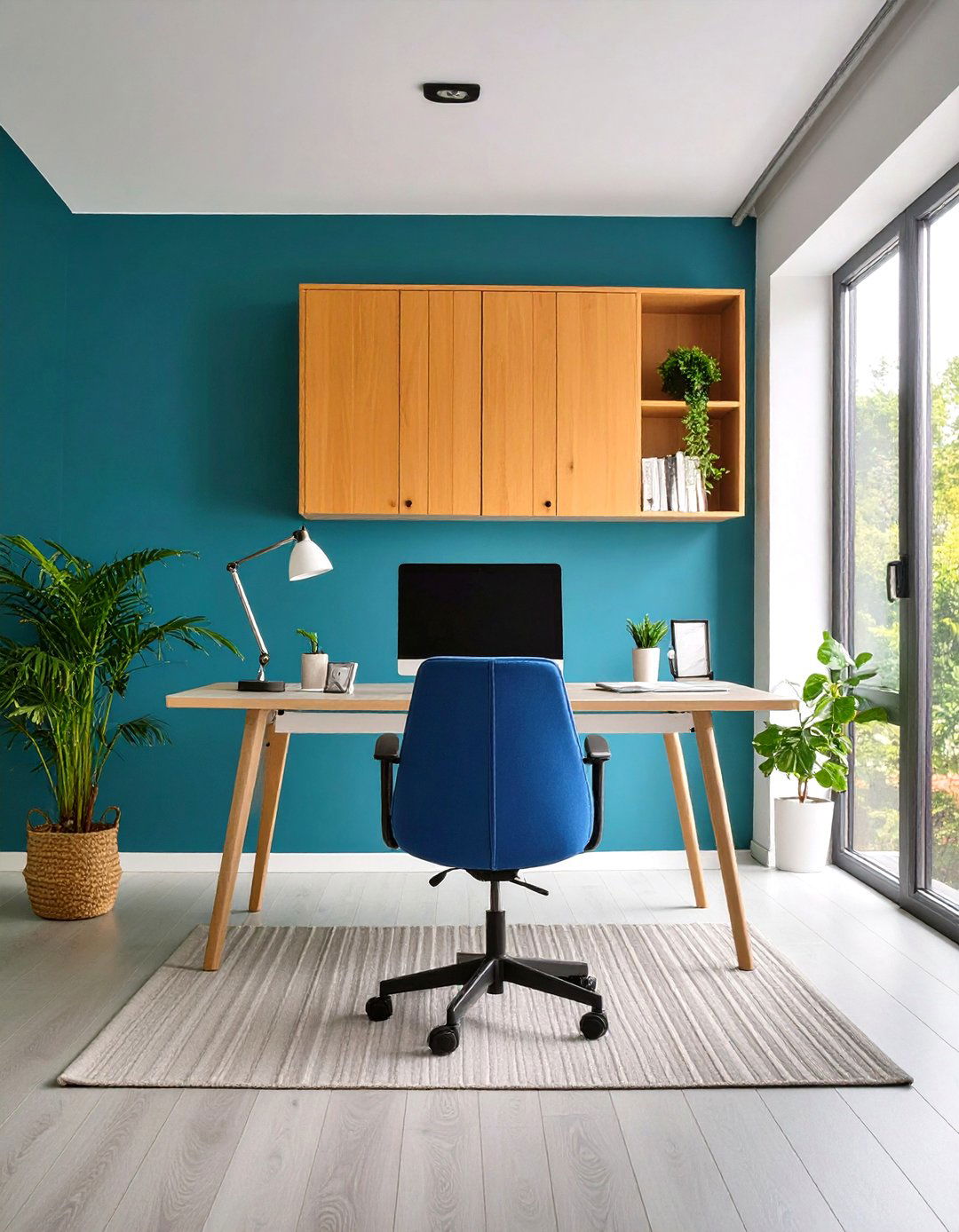
Less is more in tight quarters: choose a simple desk, a comfortable chair, and minimal accessories. Limit decorative items to one or two focal points—such as an art print or a stylish pen holder—to prevent sensory overload. A clean, uncluttered environment supports concentration and makes the room feel larger.
20. Consider a Garden or Shed Office

If interior space is at a premium, a prefabricated garden office or converted shed provides a fully separate workspace. With proper insulation, lighting, and Wi-Fi extension, these outbuildings can rival traditional home offices in comfort and privacy. Landscape pathways and outdoor lighting create an inviting arrival experience, motivating you to “commute” to work each day.
Conclusion:
Small home offices need not feel cramped or compromise on functionality. By employing clever layouts, multi-purpose furniture, vertical solutions, and thoughtful décor, you can create a stylish and efficient workspace that fits seamlessly into your home. Whether you convert a closet, install a floating desk, or invest in a garden office, each of these ideas empowers you to make the most of limited square footage—transforming any corner into a productivity haven.


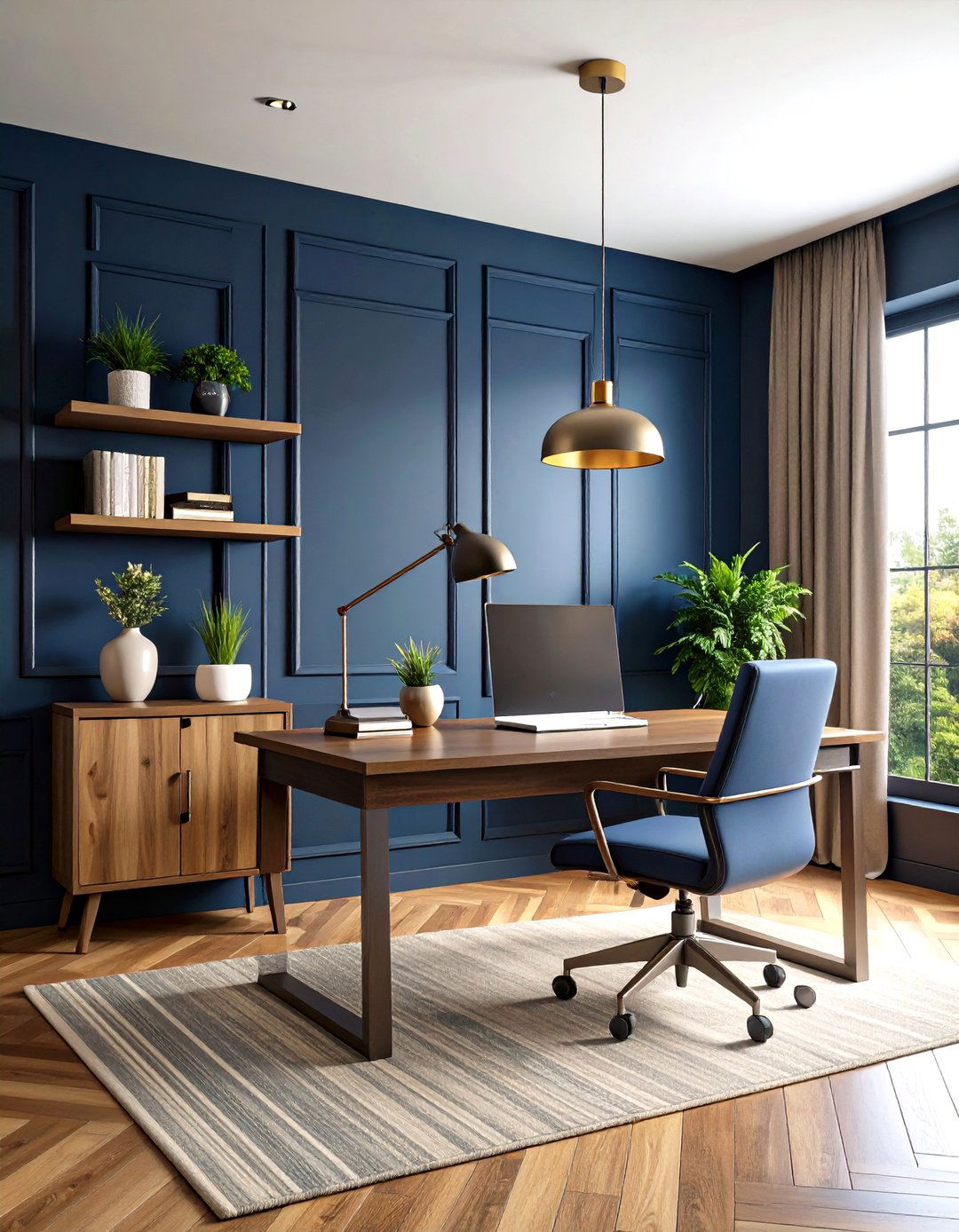
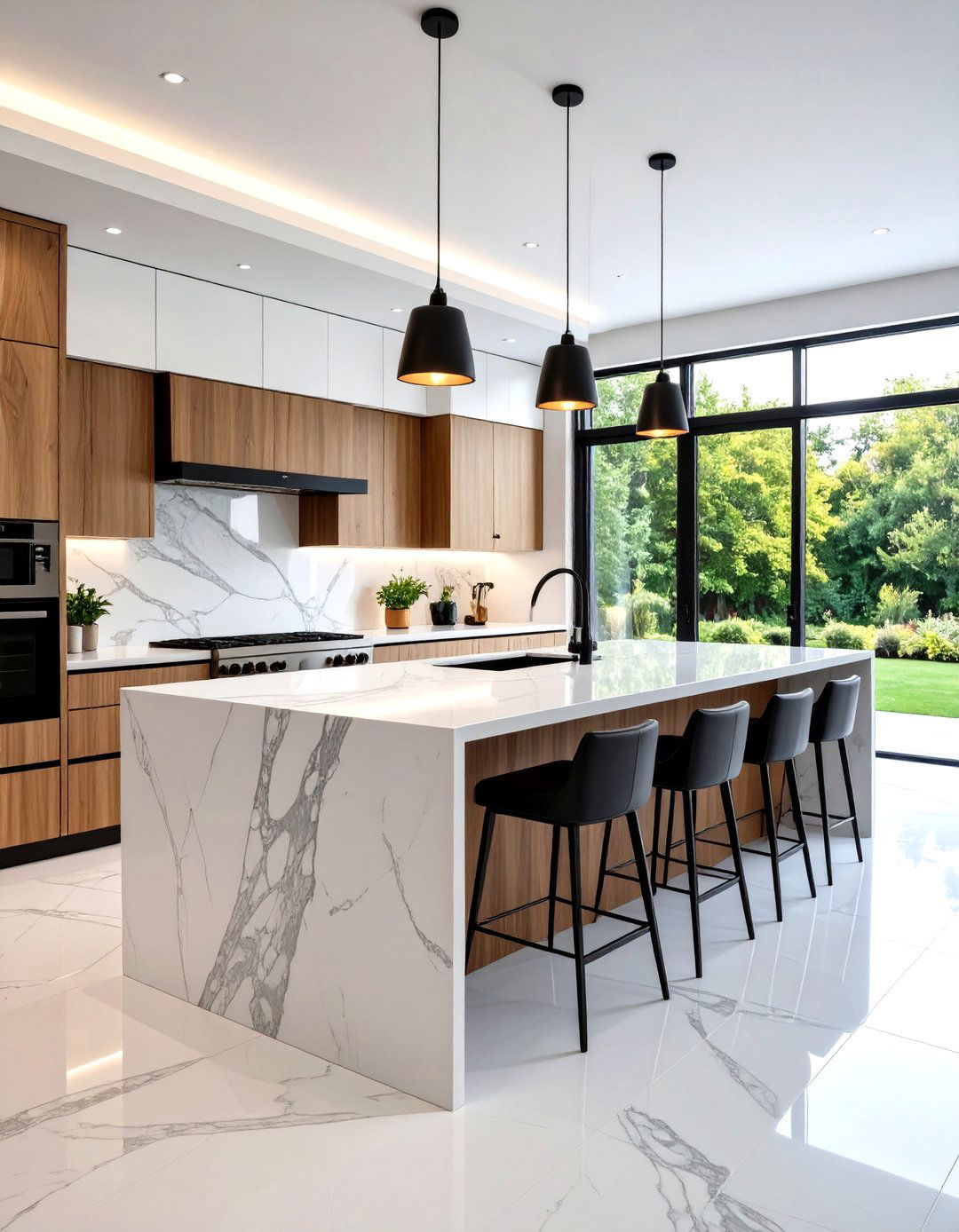
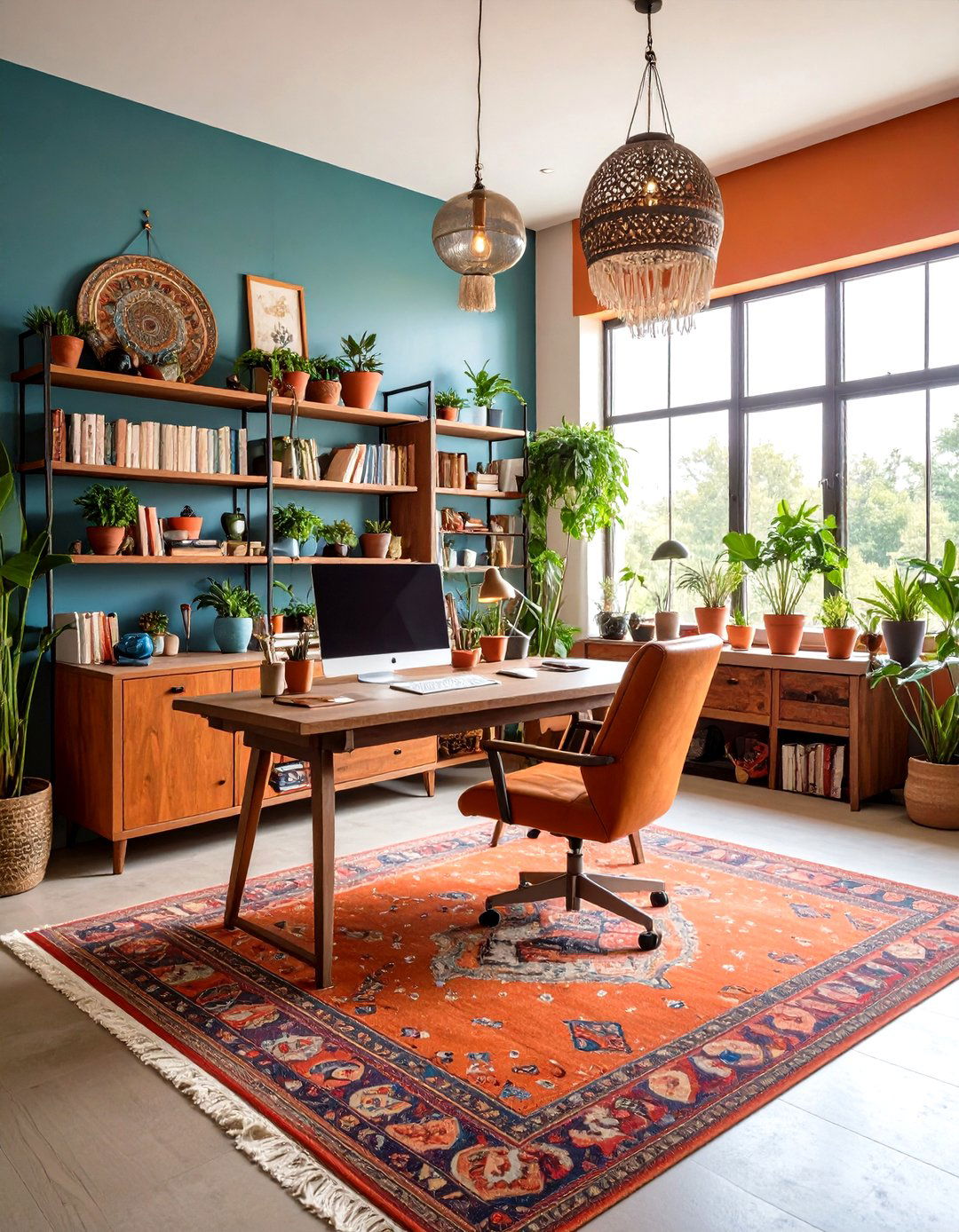
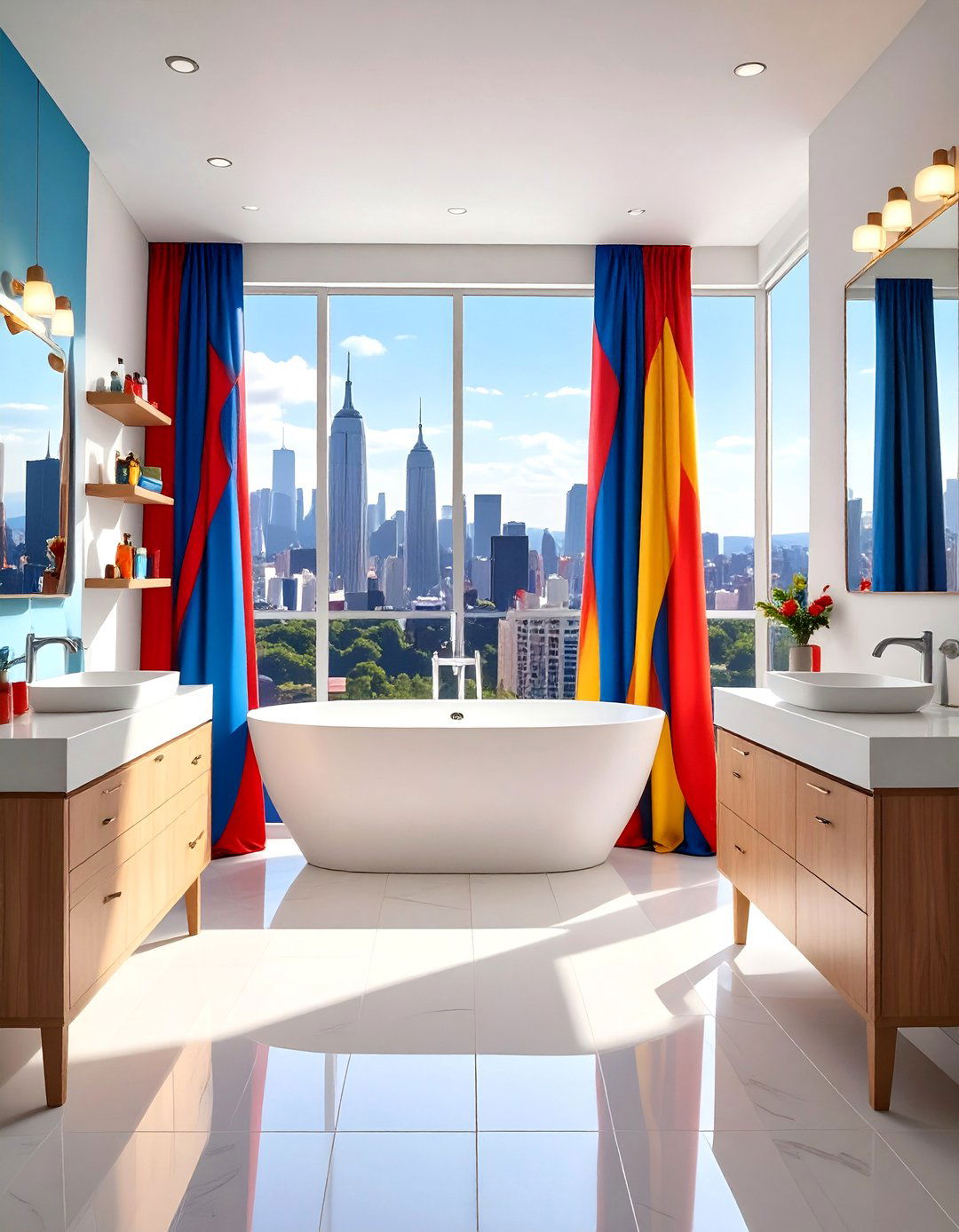

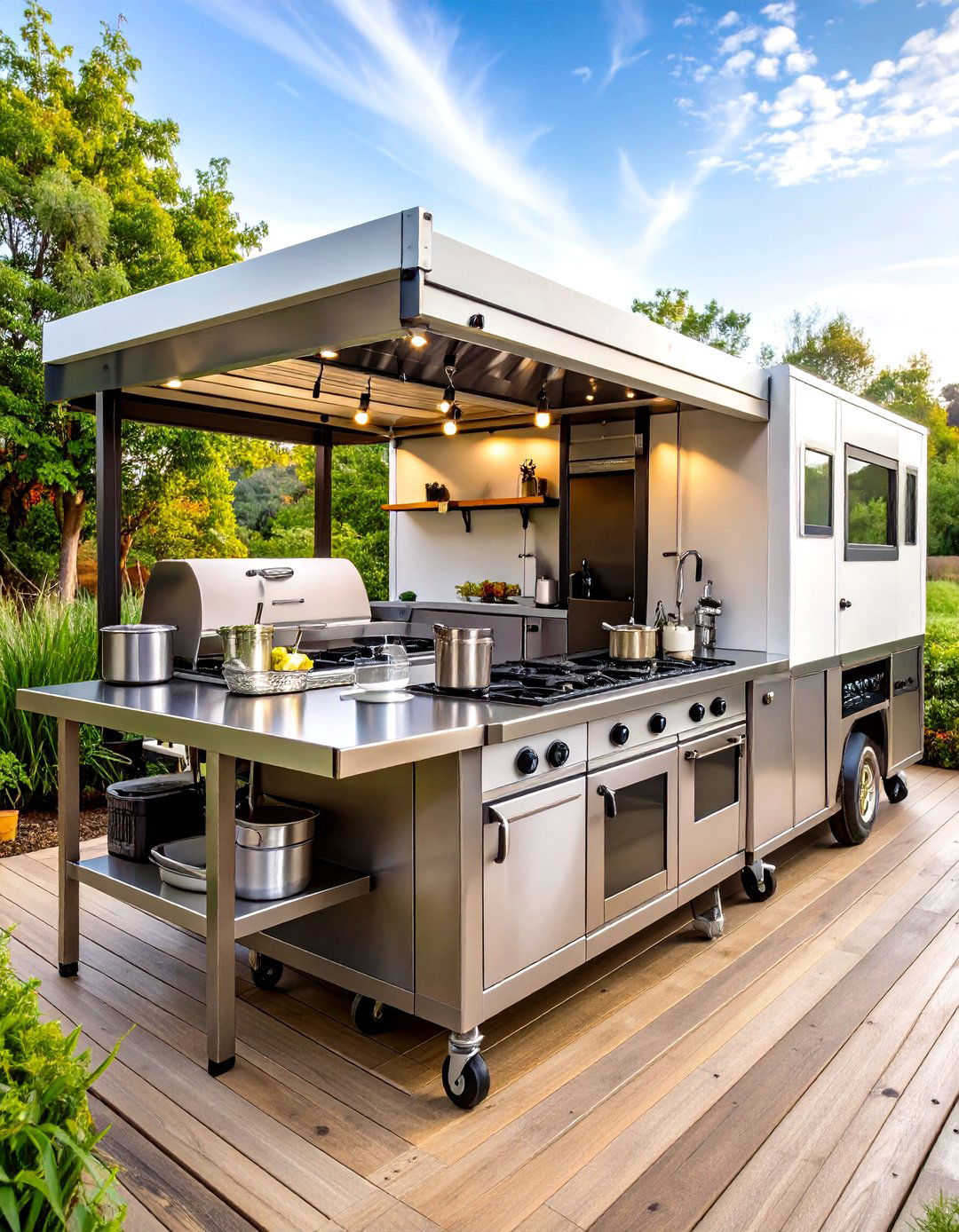
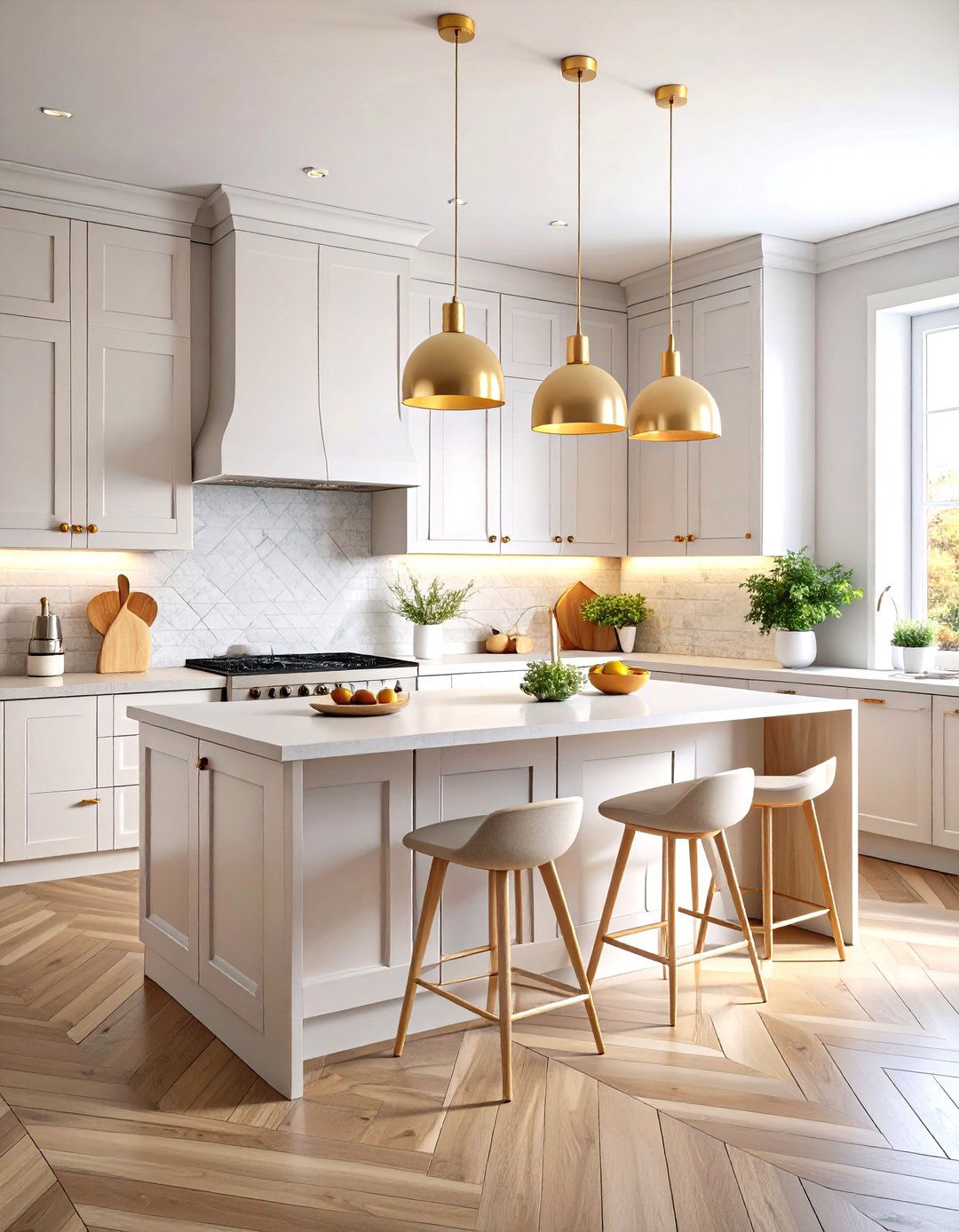
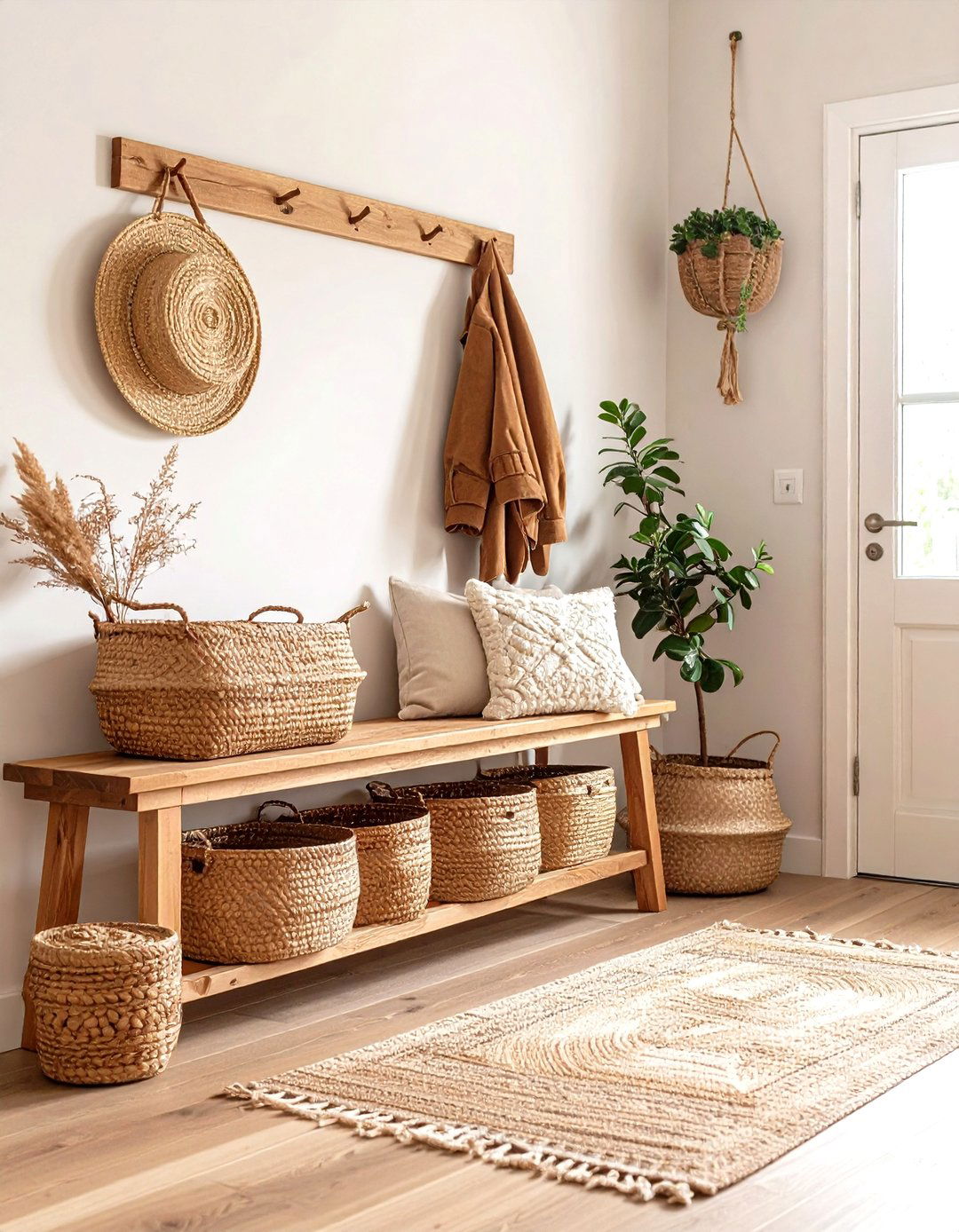
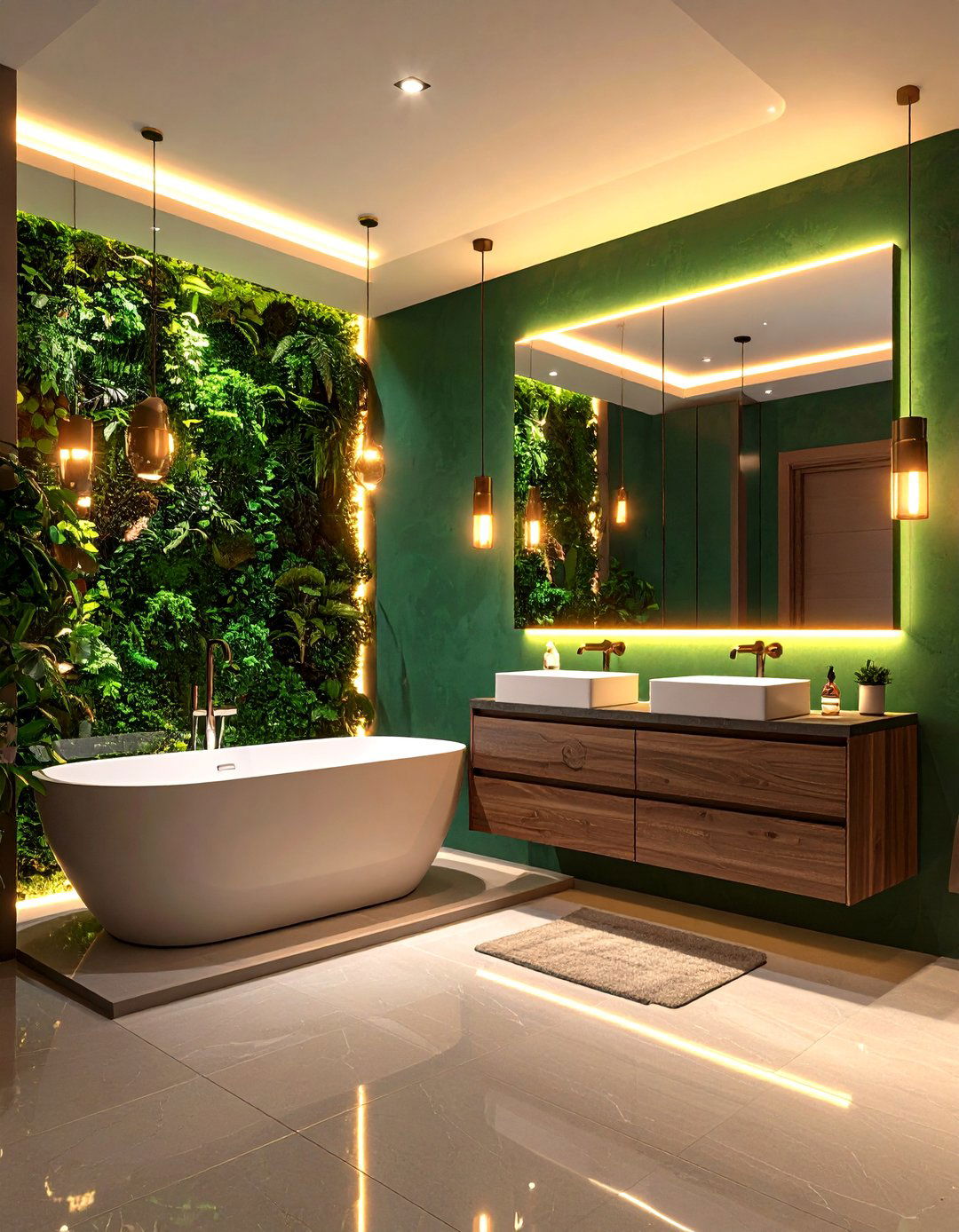
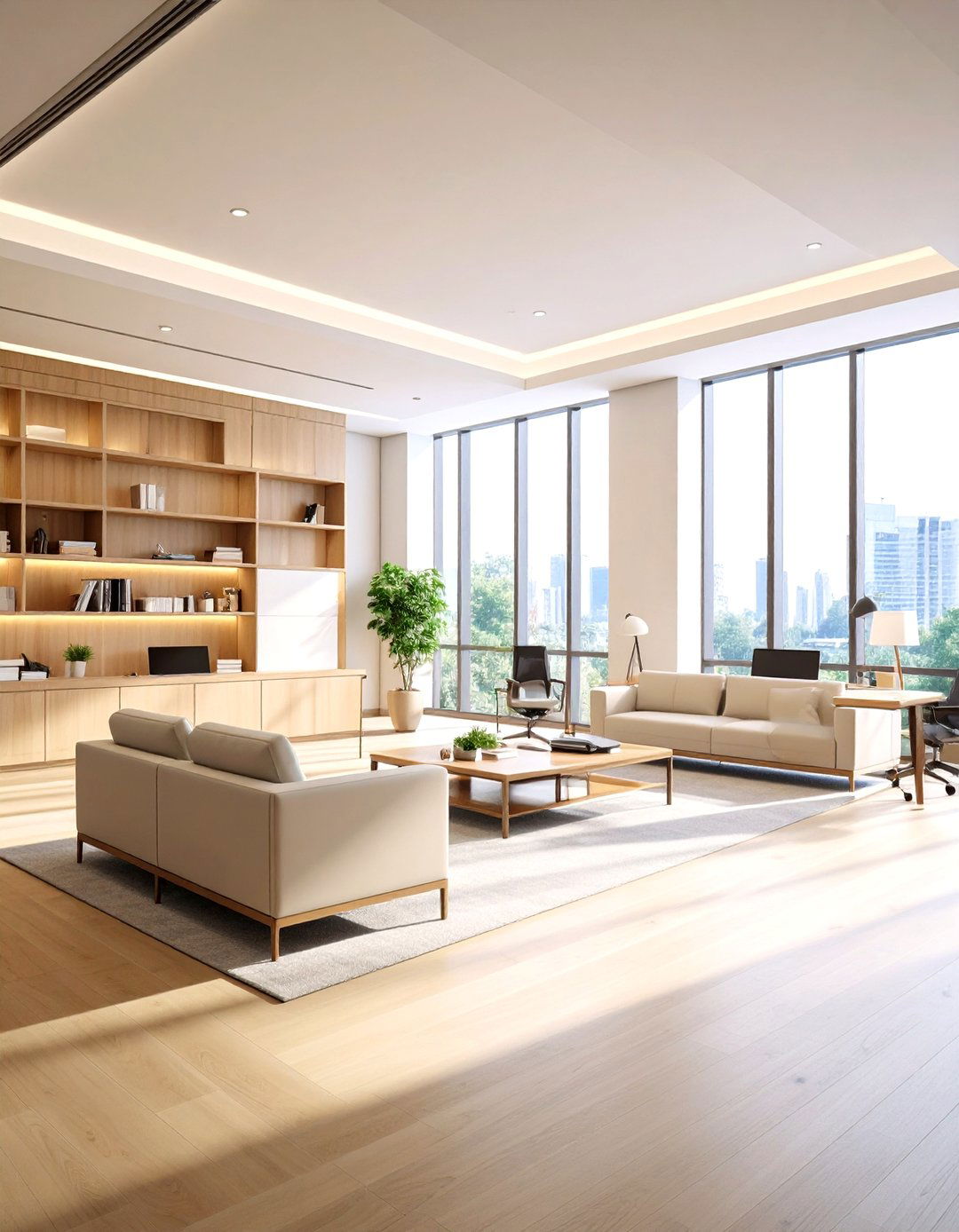
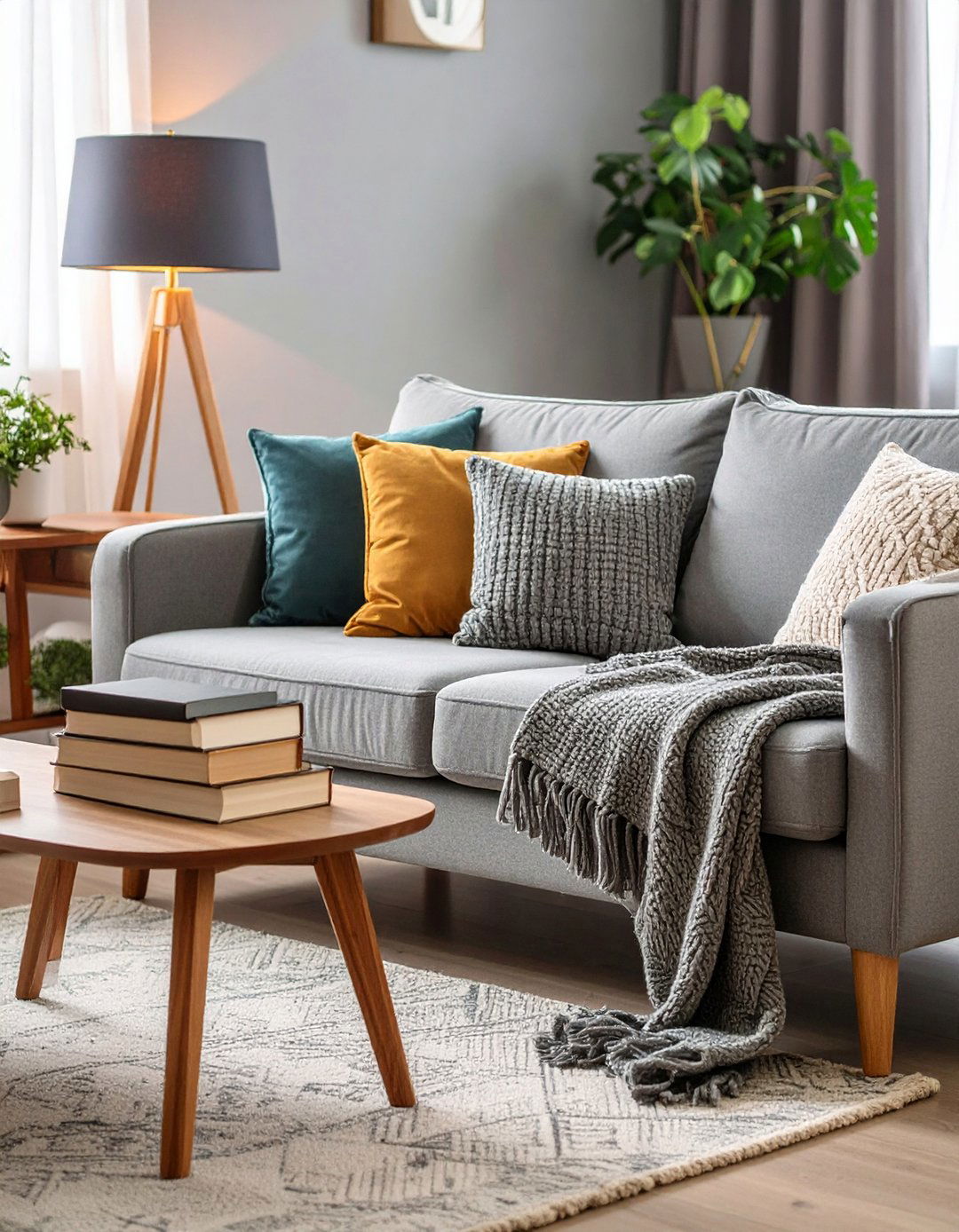

Leave a Reply